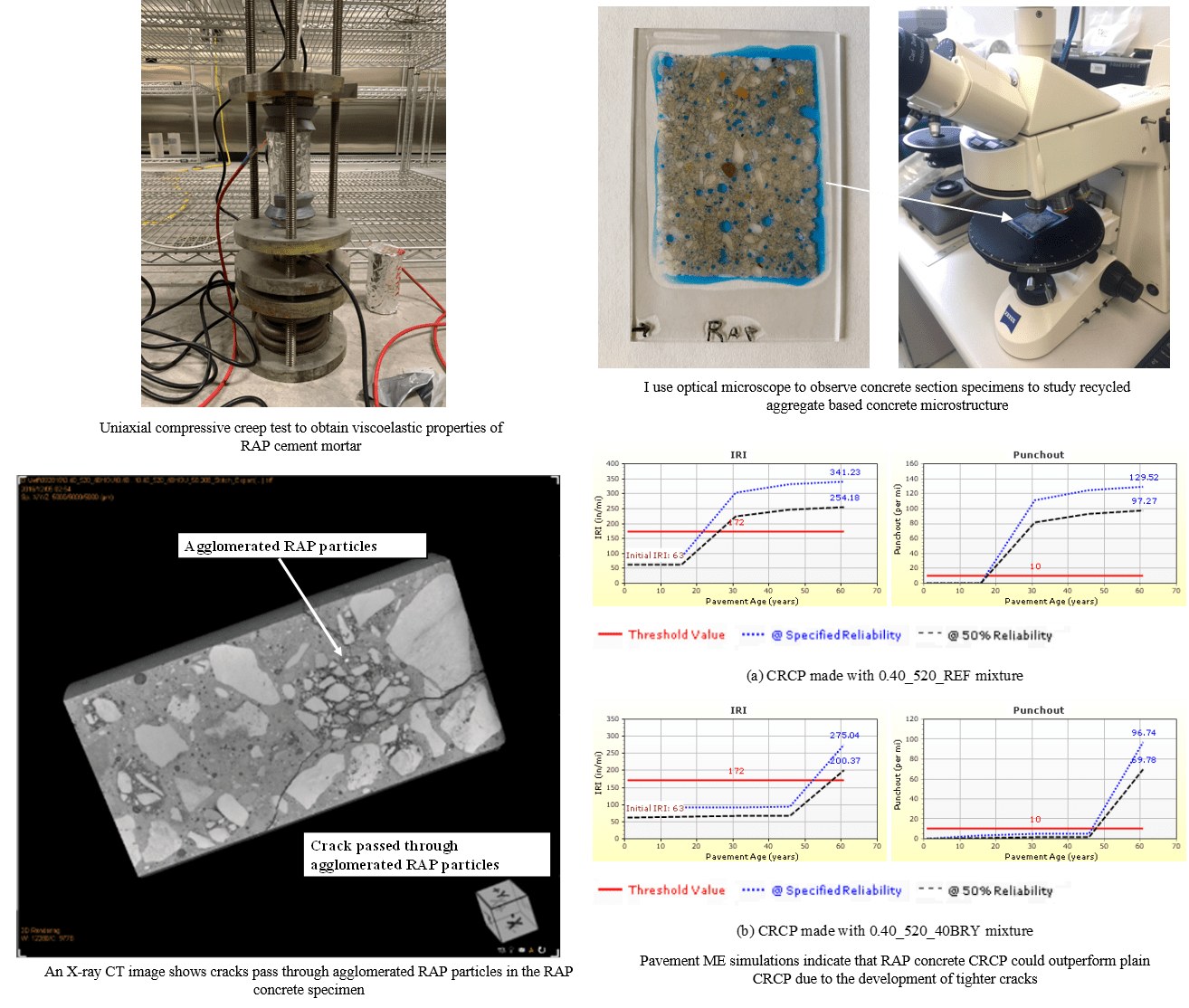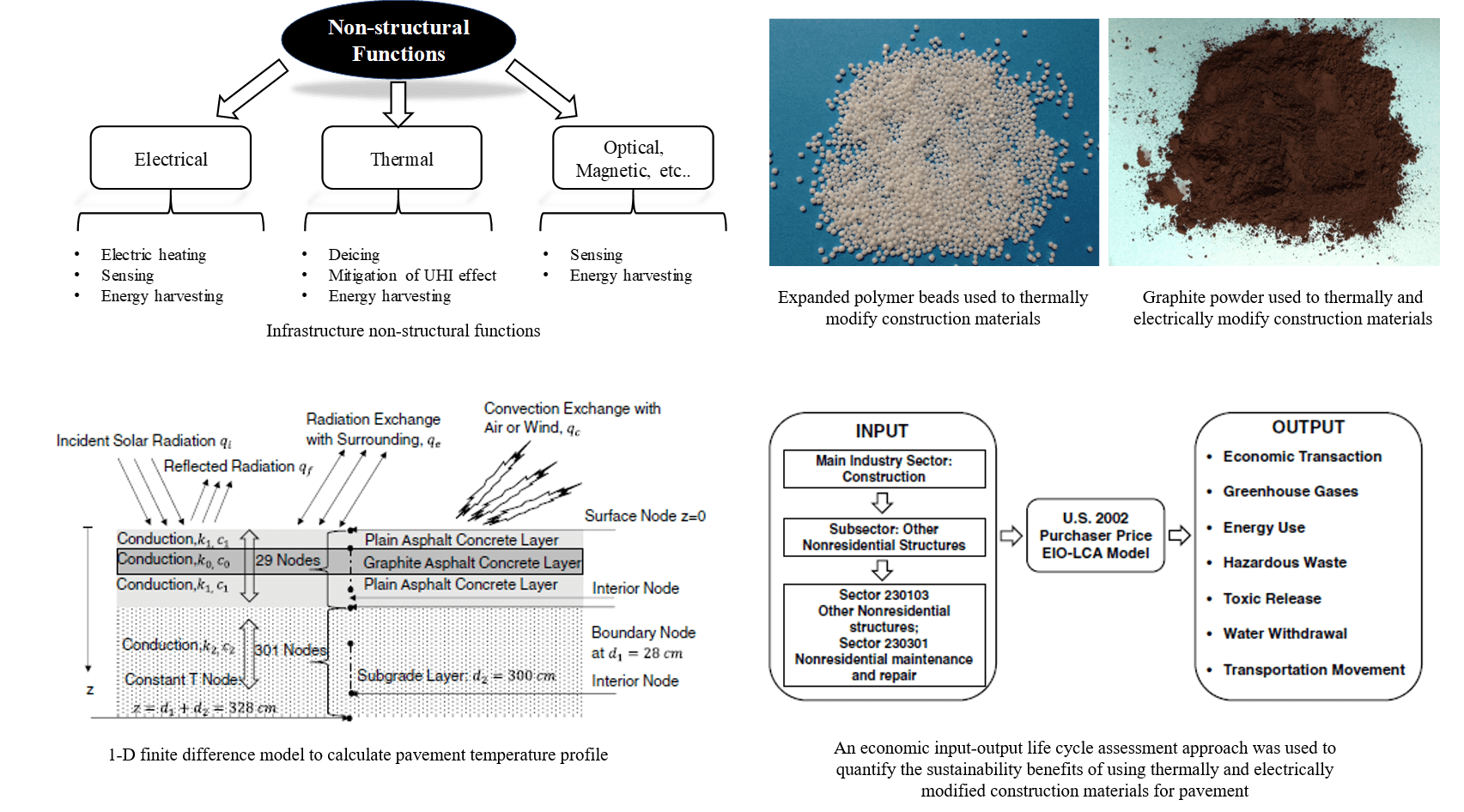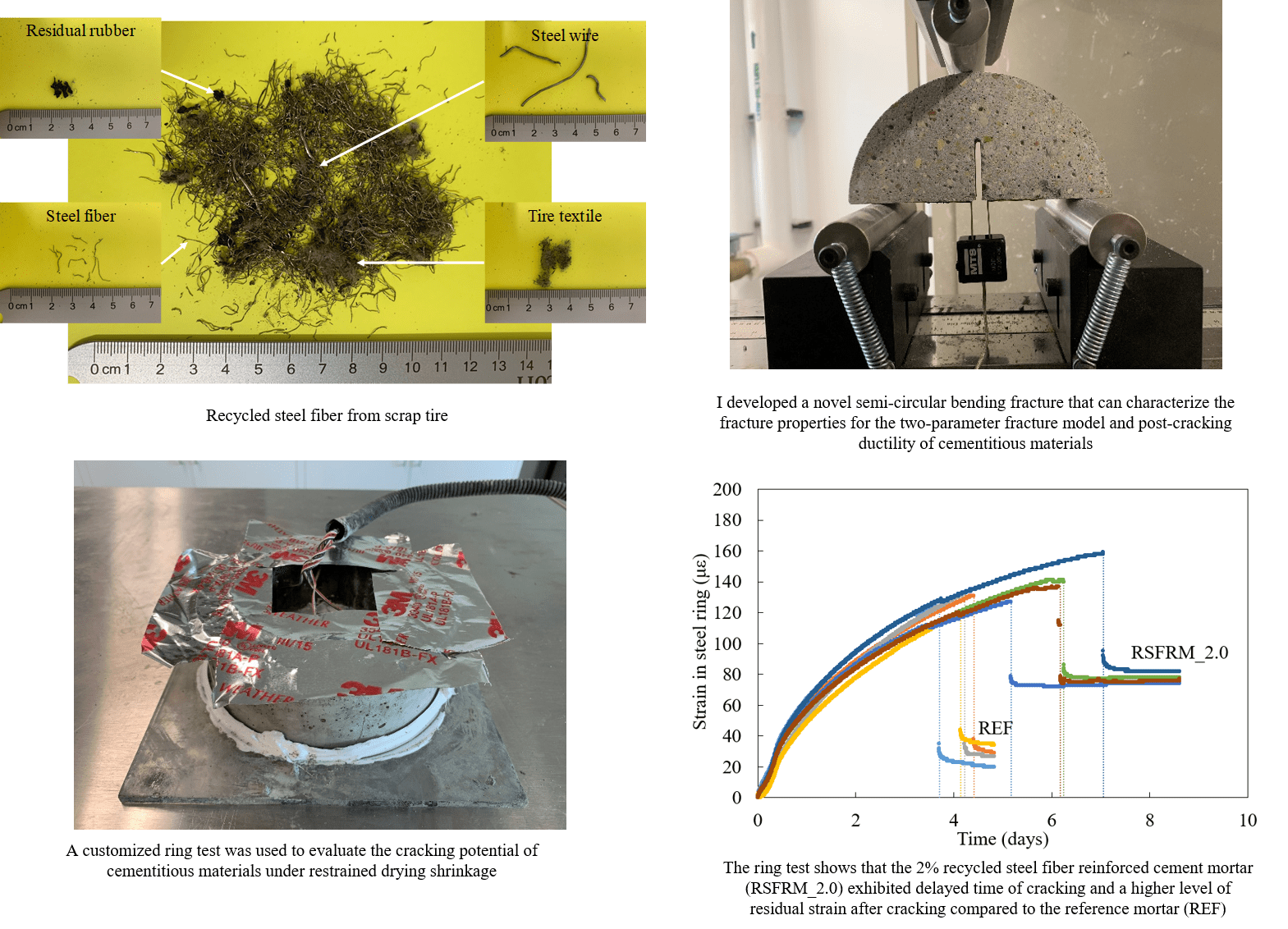Cement-based Materials Containing Recycled Aggregates (Click Here for Relevant Papers)
I served as the lead researcher for two state DOT research projects; both the projects aimed at the evaluation of cement-based materials containing recycled aggregate materials from demolished pavements (i.e., reclaimed asphalt pavement and recycled concrete aggregate). Most of the existing research on this topic only focused on testing mechanical properties of the cement-based materials containing recycled aggregates; the information addressing other aspects, such as failure mechanisms, fracture properties, and pavement performance, is very limited. The lack of good understanding of the characteristics of these materials and their impact on pavement performance has hindered the implementation in the field, and consequently may result in a missed opportunity for using these recycled materials. My past research work covered a wide range of aspects, including mechanical properties, microstructure, fracture, thermodynamics, pavement design, and life-cycle assessment. My future work will include development of fracture-based criteria for the prediction of civil structure behavior. This effort will lead to a more reliable field performance prediction package for materials with reduced strength but not necessarily reduced fracture properties (such as cementitious materials containing recycled aggregates).
Multifunctional Construction Materials for Smart Infrastructure (Click Here for Relevant Papers)
The functions of construction materials can be categorized as structural functions and non-structural functions. Pavement system can be multifunctionally designed — it can have qualified structural performance as well as exhibit non-structural properties including electrical and thermal conductivity, sensing and actuation, energy harvesting/storage, self-healing capability, electromagnetic interference shielding, recyclability, and biodegradability. Among the various non-structural properties, my research interest includes use of conductive additives to make construction materials thermally and electrically conductive. Thermally and electrically conductive construction materials can bring huge potentials for various multifunctional applications such as self-healing, self-sensing, snow and ice removal, and energy harvesting. My past research experience includes regulation of pavement temperature with thermally and electrically modified asphalt concrete. A better control of pavement temperature can help mitigate the heat island effect during summer and enhance road safety by reducing pavement snow and ice formation during winter. My future interest includes use of thermally and electrically conductive pavement system for self-healing, self-sensing and harvesting energy. In addition to developing conductive construction materials, I also work on using phase change materials to modify construction materials for pavement temperature regulation.
Sustainable, High Performance Fiber Reinforced Construction Materials (Click Here for Relevant Papers)
Conventional cement-based or asphaltic materials are significantly more brittle compared to some other materials (e.g., metals). Infrastructures, including pavements and bridges built with cement concrete or asphalt concrete, are vulnerable to cracks due to the brittle nature of these construction materials. Cracks that are sufficiently wide create easy paths for moisture and chemicals to penetrate the structure and ultimately lead to structural deterioration and failure. Use of a random distribution of short, discontinuous fibers to reinforce cementitious or asphaltic materials is considered one of the most effective ways to improve material toughness and control cracking. My research interest is to extensively characterize fiber reinforced construction materials with innovative tools and methodologies. I am particularly interested the materials post-crack behavior and fiber bridging mechanisms through advanced and innovative laboratory and simulation approaches. My current work includes the utilization of recycled steel fiber from scrap tire to reinforce cement-based materials. Unrecycled tire waste is a big global problem because the scrap tires are non-biodegradable. They are also flammable and can lead to leaching of toxic substances into the ground. Concrete containing scrap tire recycled steel fibers has been proved to have comparable reinforcing benefits with the concrete reinforced with industrial high-quality steel fibers in terms of ductility and toughness improvement. Furthermore, unsorted recycled steel fiber is approximately 10 times cheaper than the industry made steel fibers. A successful application of the recycled steel fiber in concrete not only helps reduce the volume of unrecycled tire waste but also improves concrete ductility and toughness in an economical way.


